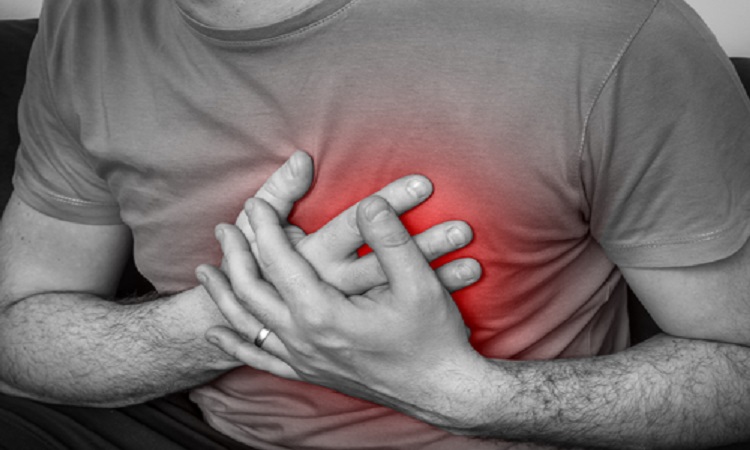Health: Feeling protected from crime lowers risk of heart attack, says recent study
According to the research of more than 35,000 adults published at the ESC Congress 2023, feeling protected from crime is connected with a 9 per cent lower risk of premature death and a 6 per cent fewer chances of a heart attack. Read further on Dynamite News.

Amsterdam: According to the research of more than 35,000 adults published at the ESC Congress 2023, feeling protected from crime is connected with a 9 per cent lower risk of premature death and a 6 per cent fewer chances of a heart attack.
“There is increasing evidence that the neighbourhood we live in affects our health,” said study author Dr Mengya Li of the National Center for Cardiovascular Diseases, Beijing, China.
“This study highlights the importance of many aspects of our surroundings for heart health and longevity, including feeling safe, having shops, transport and parks close by, cleanliness, and feeling that our neighbourhood is a good place to live and to raise children.”
The researchers used data from the PURE-China study to investigate the association between neighbourhood characteristics, cardiovascular disease (CVD) and death. The study included 35,730 adults aged 35 to 70 years from 115 communities (70 urban and 45 rural) in 12 provinces of China between 2005 and 2009. The average age of participants was 51 years and 60 per cent were women.
Trained research staff conducted face-to-face interviews to collect baseline information on the neighbourhood environment using the Neighbourhood Environment Walkability Scale (NEWS).
Also Read |
UEFA Euro Cup 2020 Qualifiers: Germany beats Netherlands in a classic
The questionnaire contains eight subscales. Scores for each subscale were added up to obtain a total NEWS score. High scores reflected positive perceptions about the community.
The eight subscales covered: 1) how long it takes to walk to shops, restaurants, banks, pharmacies, work, transport stops and parks; 2) perceived ease of walking to shops and transport stops; 3) the distance between intersections (which indicates ease of getting around); 4) infrastructure for walking/cycling (e.g. pavements to walk on); 5) aesthetics (e.g. trees shading the pavement, interesting things to look at while walking, freedom from litter); 6) safety from traffic (e.g. the amount of traffic, safety crossing the street); 7) safety from crime (e.g. street lighting at night; crime rate and safety walking during the day and night); and 8) community satisfaction (e.g. with public transportation, commute to work, access to shopping, a good place to live and to raise children).
Participants were followed up for all-cause death, death due to CVD, major CVD events (defined as death from cardiovascular causes, non-fatal myocardial infarction, stroke, or heart failure), myocardial infarction, stroke and heart failure. The primary outcome was a composite of major CVD events and all-cause mortality.
The researchers analysed the associations between each subscale and the total score and health outcomes after adjusting for factors that could influence the relationships including age, sex, body mass index, education, household income, marital status, tobacco consumption, alcohol consumption, physical activity, household cooking fuel, pollution, history of CVD, high blood pressure, diabetes and regular medications.
During a median follow up of 11.7 years, there were 2,034 (5.7 per cent) all-cause deaths, of which 765 were attributed to CVD, and 3,042 (8.5 per cent) major CVD events. A higher neighbourhood environment score was associated with a 6 per cent lower risk of the primary outcome of major CVD events and all-cause mortality, a 12 per cent lower likelihood of death during follow up, and a 10 per cent reduced risk of death due to CVD.
Also Read |
Liverpool were vulnerable, we didn't make most of that: Erik ten Hag after defeat
The subscale with the greatest association with health outcomes was safety from crime. A higher neighbourhood safety score was associated with a 9 per cent lower risk of death during follow up, 10 per cent lower risk of death from CVD, 3 per cent reduced likelihood of major CVDs, 6 per cent reduced risk of myocardial infarction and 10 per cent lower likelihood of heart failure.
For all subscales, a high score was linked with a lower risk of all-cause death during follow up, with percentages ranging from 2 per cent to 9 per cent lower risk. In addition, a high score on the subscale covering how long it takes to walk to amenities was also associated with 1 per cent lower risks of death due to CVD, major CVDs and heart attack.
Dr Li said: “While some of the percentage reductions in risk are small, they affect large numbers of people and therefore could have a wide-ranging impact. The findings can be used by policymakers to take action to mitigate the adverse effect of poor community conditions on health, such as improving local amenities and transport connectivity, providing green spaces and street lighting, and building paths for walking, running and cycling.” (ANI)
 Dynamite News
Dynamite News 